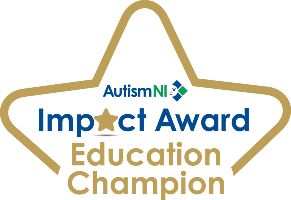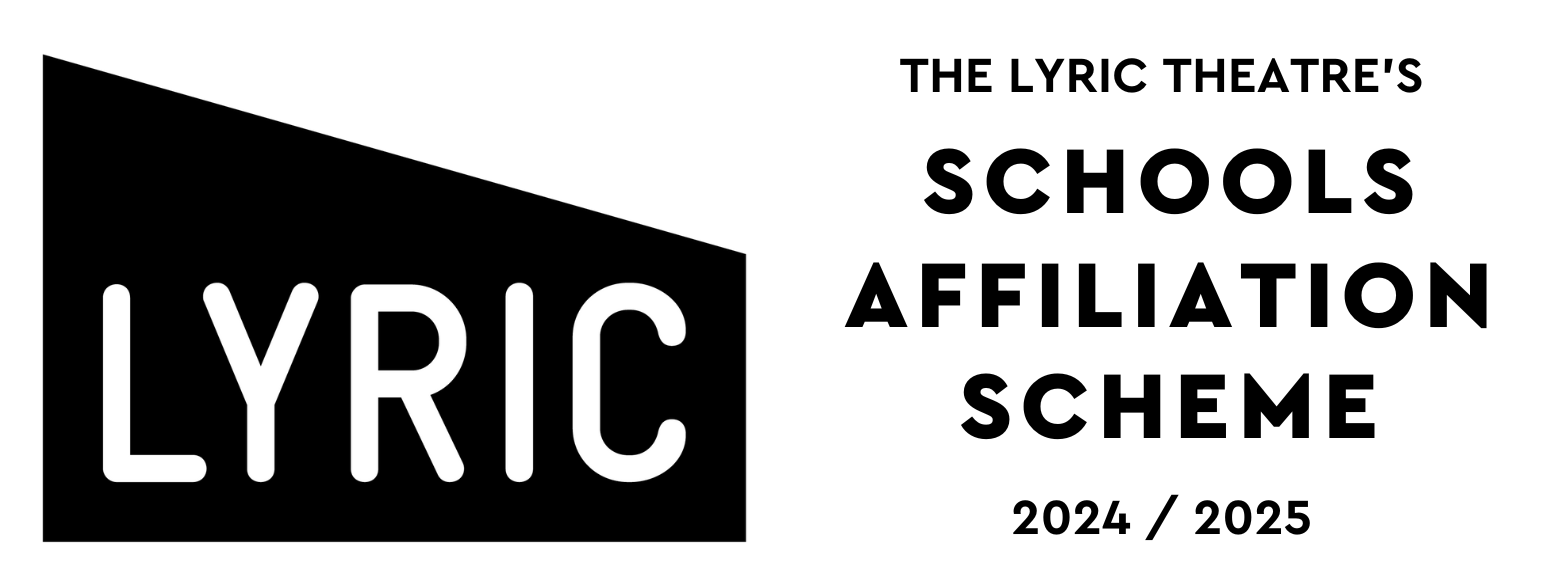Mathematics
SPECIFIC AIMS OF THE DEPARTMENT
The Mathematics Department aims to:
-
develop pupils to a suitable level of competence in a range of mathematical skills
-
encourage pupils to develop personal qualities such as initiative, self-confidence and independence;
-
develop pupils’ understanding of mathematics in its widest context and see how it relates to themselves outside school; and
-
enable pupils to develop skills which are transferable to other subjects.
OVERVIEW OF KEY STAGE 3 CURRICULUM
At Key Stage 3, Mathematics is delivered over seven lessons per fortnight to Year 8 and 9 and six lessons per fortnight to Year 10. The course aims to equip pupils with appropriate mathematical skills in a wide range of application areas and to enable them to use ICT as an effective statistical analysis tool. Pupils will develop personal skills and capabilities throughout Key Stage 3 and, having completed a series of Using Mathematics tasks, will be given a Level of Progression at the end of Year 10.
YEAR 8 CURRICULUM
In Year 8, pupils study the following topics:
-
Number
-
Angles
-
Letters and Numbers
-
Measuring Length, Area and Perimeter
-
Fractions, Decimals and Percentages
-
Co-ordinates and Symmetry
-
Data Handling
-
Volume and Nets
-
Graphs, Tables and Diagrams
-
Approximation and use of calculator
YEAR 9 CURRICULUM
In Year 9, pupils study the following topics:
-
Algebra with Brackets and Sequences
-
Ratio and Proportion
-
Quadrilaterals and Volume of Prisms
-
Scale Drawing, Constructions and Bearings
-
Polygons
-
Statistics
-
Money Matters
-
Inequalities
-
The Circle
-
Prime factors and Indices
YEAR 10 CURRICULUM
In Year 10, pupils study the following topics:
-
Pythagoras Theorem and Trigonometry
-
Expressions, Equations and Formulae
-
Linear Functions and Shading regions
-
Money Matters
-
Transformations
-
Probability
-
Cumulative Frequency and Boxplots
-
Compound Measures
-
Standard Form
Throughout Key Stage 3, pupils complete Using Mathematics tasks and are awarded a Level of Progression in Using Mathematics at the end of Year 10. In Year 10, pupils complete two assessments, one in December and one in June. The results of these two assessments are used to place pupils into groups for GCSE Mathematics. Half of the year group are then offered the opportunity to study GCSE Mathematics in Year 11 and then GCSE Further Mathematics in Year 12 as part of the accelerated GCSE Mathematics programme. The rest of the year group will study GCSE Mathematics over their two years of study at Key Stage 4.
OVERVIEW OF KEY STAGE 4 CURRICULUM
At Key Stage 4, the Mathematics Department offers Mathematics and Further Mathematics at GCSE Level. Pupils follow the CCEA specification. Mathematics is delivered over eight or nine lessons per fortnight.
GCSE MATHEMATICS
The content of each GCSE Mathematics unit relates to:
-
Number and Algebra;
-
Geometry and Measures; and
-
Statistics and Probability.
Through each unit at Key Stage 4, pupils will:
-
develop knowledge, skills and understanding of mathematical methods and concepts;
-
acquire and use problem-solving strategies;
-
select and apply mathematical techniques and methods in mathematical, everyday and real-world situations;
-
reason mathematically, make deductions and inferences, and draw conclusions;
-
interpret and communicate mathematical information in a variety of forms appropriate to the information and context; and
-
acquire a foundation appropriate to the further study of mathematics and other disciplines.
All pupils in Year 11 will complete at least one GCSE Higher Level Mathematics module at the end of Year 11 (either M3 or M4). All pupils will sit the completion paper M7 or M8 at the end of Year 12.
Unit 1: M3 OR M4 (45%)
Pupils will study either M3 or M4 depending on their mathematical ability and their progress during Year 11.
This unit is assessed in the form of a written examination. Pupils will have 2 hours to complete the assessment for this unit.
Assessment of this unit will take place at the end of Year 11. Pupils’ work in this unit will be externally assessed. A calculator is permitted for this examination.
Unit 2: M7 OR M8 (Completion Test) (55%)
Pupils will study either M7 or M8 depending on their attainment in their Year 11 module (M3 or M4) and their progress during Year 12.
This unit is assessed in the form of two written examinations – Paper 1 and Paper 2. Pupils will have 1 hour and 15 minutes to complete each examination. Assessment of this unit will take place at the end of Year 12. Pupils’ work in this unit will be externally assessed.
Pupils may not use a calculator for Paper 1. The use of a calculator is permitted for Paper 2.
Grades available for the different modules combinations are as follows:
M4 and M8: Grade A* to D
M4 and M7: Grade A to D
M3 and M7: Grade B to E
GCSE FURTHER MATHEMATICS
Pupils who study Further Mathematics will complete GCSE Mathematics modules M4 and M8 at the end of Year 11 and GCSE Further Mathematics Unit 1, 2 and 3 at the end of Year 12.
GCSE Further Mathematics takes the study of Mathematics beyond the content of GCSE Higher Tier. It introduces some of the pure, mechanics and statistics topics that students encounter in GCE Mathematics and acts as a ‘stepping stone’ between GCSE and GCE.
Unit 1: Pure Mathematics (50%)
This unit is assessed in the form of a written examination. Pupils will have 2 hours to complete the assessment for this unit.
Assessment of this unit will take place at the end of Year 12. Pupils’ work in this unit will be externally assessed.
Topics included in this unit are:
-
Algebra
-
Trigonometry
-
Differentiation
-
Integration
-
Matrices
-
Logarithms
Unit 2: Mechanics (25%)
This unit is assessed in the form of a written examination. Pupils will have 1 hour to complete the assessment for this unit.
Assessment of this unit will take place at the end of Year 12. Pupils’ work in this unit will be externally assessed.
Topics included in this unit are:
-
Kinematics
-
Forces and Newton's Laws
-
Vectors
-
Moments and Equilibrium
Unit 3: Statistics (25%)
This unit is assessed in the form of a written examination. Pupils will have 1 hour to complete the assessment for this unit.
Assessment of this unit will take place at the end of Year 12. Pupils’ work in this unit will be externally assessed.
Topics included in this unit are:
-
Measures of Central Tendency and Dispersion
-
Probability
-
Binomial Distribution
-
Normal Distribution
-
Bivariate Analysis
OVERVIEW OF KEY STAGE 5 CURRICULUM
At Key Stage 5, the Mathematics Department offers Mathematics at AS and A2 Level. Students follow the CCEA specification. At AS and A2 Level, Mathematics is delivered over eleven lessons per fortnight.
At Key Stage 5, the Mathematics Department aims to:
-
consolidate and extend the knowledge, skills and understanding developed by students at Key Stage 4;
-
have a structure which will allow students of all abilities to have the opportunity to demonstrate positive achievement; and
-
provide a suitable foundation for the study of Mathematics and other subjects in further and higher education and for a range of interesting careers.
At AS Level, students must successfully complete two modules. A further two modules must be successfully completed at A2 Level.
AS MATHEMATICS
Unit 1: AS1 Pure Mathematics (60% of AS, 24% of A Level)
This unit covers the pure content of AS Mathematics. It is compulsory for both AS and A Level Mathematics.
In this unit, students are required to study:
-
Algebra and Functions
-
Co-ordinate Geometry
-
Sequences and Series
-
Trigonometry
-
Exponential and Logarithms
-
Differentiation
-
Integration
-
Vectors
This unit is assessed in the form of a written examination. Students will have 1 hour and 45 minutes to complete the assessment for this unit.
Assessment of this unit will take place at the end of Year 13. Students may use a calculator for this assessment.
Unit 2: AS2 Applied Mathematics (40% of AS, 16% of A Level)
This unit, which assumes knowledge of Unit AS 1, covers the applied content of AS Mathematics and is compulsory for both AS and A level Mathematics. The unit addresses aspects of both mechanics (50% of the assessment) and statistics (50% of the assessment). It assesses modelling and the application of mathematics.
In this unit, students are required to study:
Section A: Mechanics
-
Quantities and Units
-
Kinematics
-
Forces and Newton's Laws
Section B: Statistics
-
Statistical Sampling
-
Data Presentation and Interpretation
-
Probability
-
Statistical Distributions
This unit is assessed in the form of a written examination. Students will have 1 hour and 15 minutes to complete the assessment for this unit. The examination has two sections: Section A assesses mechanics and Section B assesses statistics. Students answer all questions in both sections.
Assessment of this unit will take place at the end of Year 13. Students may use a calculator for this assessment.
A2 MATHEMATICS
Unit 1: A21 Pure Mathematics (36% of A2)
This unit assumes knowledge of Units AS 1 and AS 2. It covers the pure content of A2 Mathematics and is compulsory for A level Mathematics.
In this unit, students are required to study:
-
Algebra and Functions
-
Co-ordinate Geometry
-
Sequences and Series
-
Trigonometry
-
Differentiation
-
Integration
-
Numerical Methods
This unit is assessed in the form of a written examination. Students will have 2 hours and 30 minutes to complete the assessment for this unit.
Assessment of this unit will take place at the end of Year 14. Students may use a calculator for this assessment.
Unit 2: A22 Applied Mathematics (24% of A2)
This unit assumes knowledge of Units AS 1, AS 2 and A2 1. It covers the applied content of A2 Mathematics and is compulsory for A level Mathematics. The unit addresses aspects of both mechanics (50% of the assessment) and statistics (50% of the assessment). It assesses modelling and the application of mathematics.
In this unit, students are required to study:
Section A: Mechanics
-
Kinematics
-
Moments
-
Impulse and Momentum
Section B: Statistics
-
Probability
-
Statistical Distributions
-
Statistical Hypothesis Testing
This unit is assessed in the form of a written examination. Students will have 1 hour and 30 minutes to complete the assessment for this unit. The examination has two sections: Section A assesses mechanics and Section B assesses statistics. Students answer all questions in both sections.
Assessment of this unit will take place at the end of Year 14. Students may use a calculator for this assessment.
Please note: To achieve an A* grade, a student must obtain the required uniform marks to achieve a Grade A and their average score for A21 (Pure) and A22 (Applied) must meet or exceed 90% of the uniform marks for these modules.
ADDITIONAL SUBJECT INFORMATION
EXTRA- CURRICULAR PROVISION
The Mathematics Department contributes extensively to the school’s extra-curricular provision. Extra-curricular activities include:
-
Numeracy activities for Key Stage 3
-
Feeder Primary School Numeracy Days
-
Junior Mathematical Challenge for Year 9
-
Intermediate Mathematical Challenge for Year 12
-
Senior Mathematical Challenge for Year 14
-
Numeracy withdrawal support
-
Numeracy club for Key Stage 3 pupils (Year 13 and 14 Mathematics pupils act as mentors)
-
Attendance at in-house lectures by visiting speakers
-
Visits to University Open Days in Mathematically related pathways
FACILITIES AND RESOURCES
Facilities and resources within the Mathematics Department include:
-
6 classrooms with interactive white boards
CAREERS INFORMATION
The study of Mathematics is useful for careers in areas such as:
-
Actuary
-
Engineering
-
Finance
-
Teaching
-
Medicine









